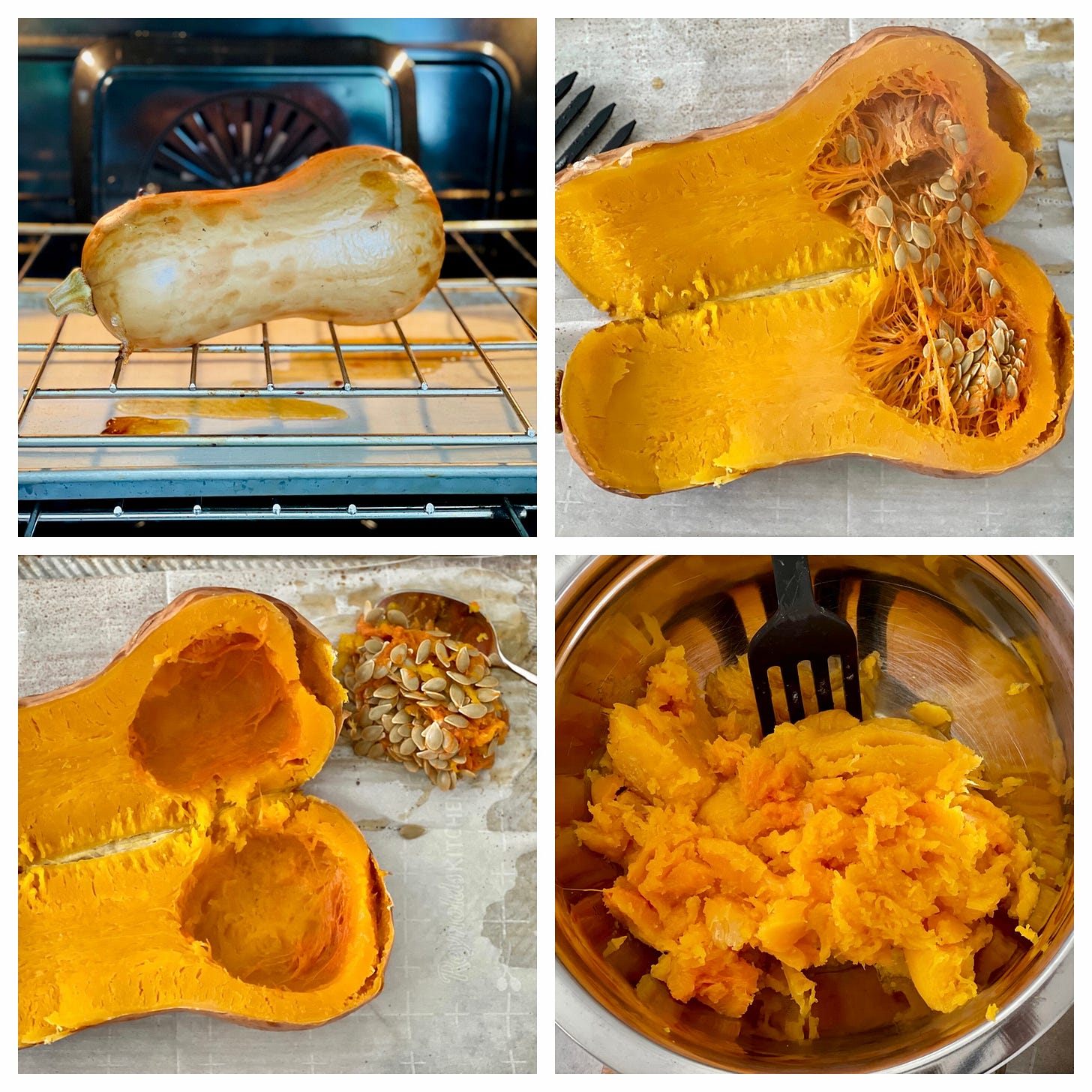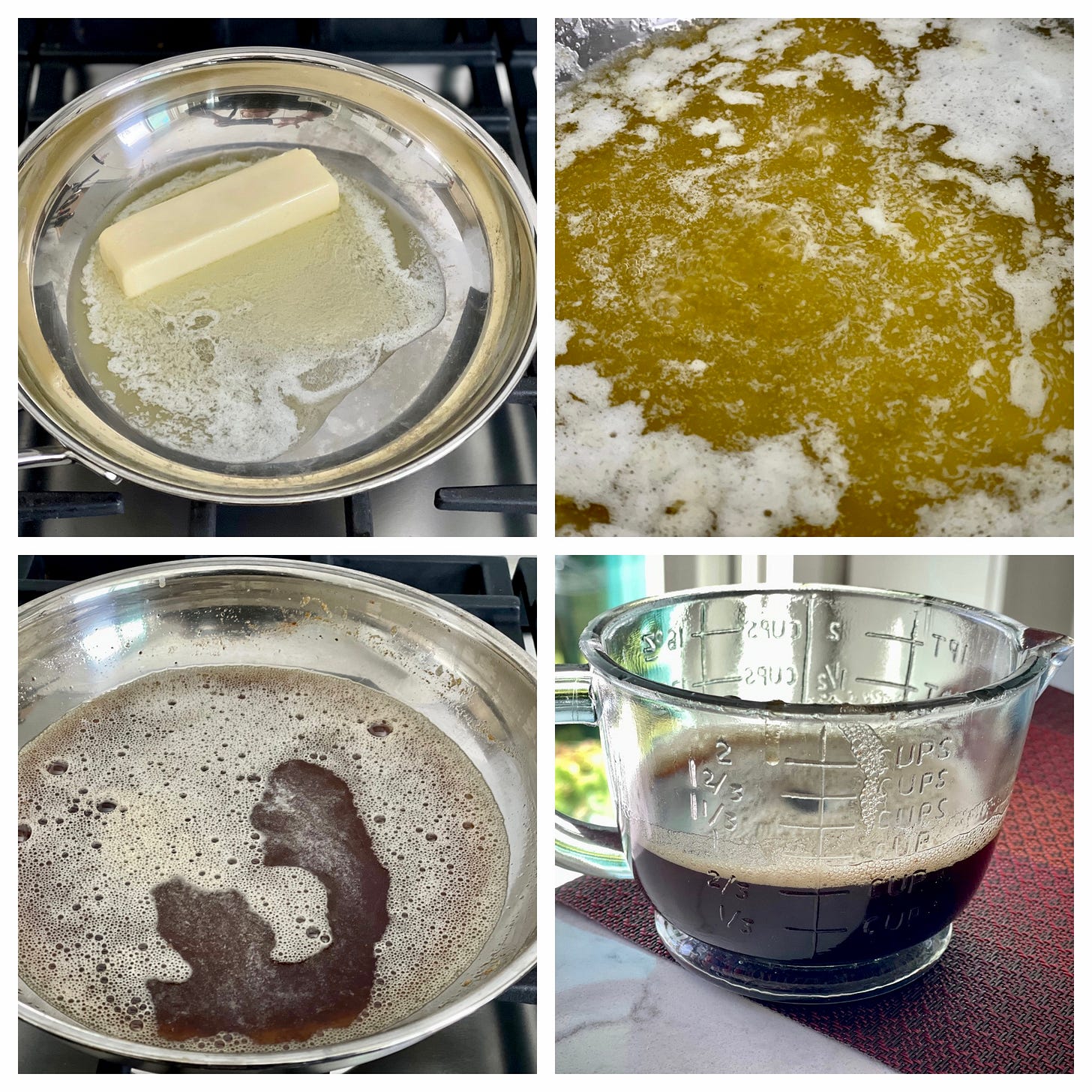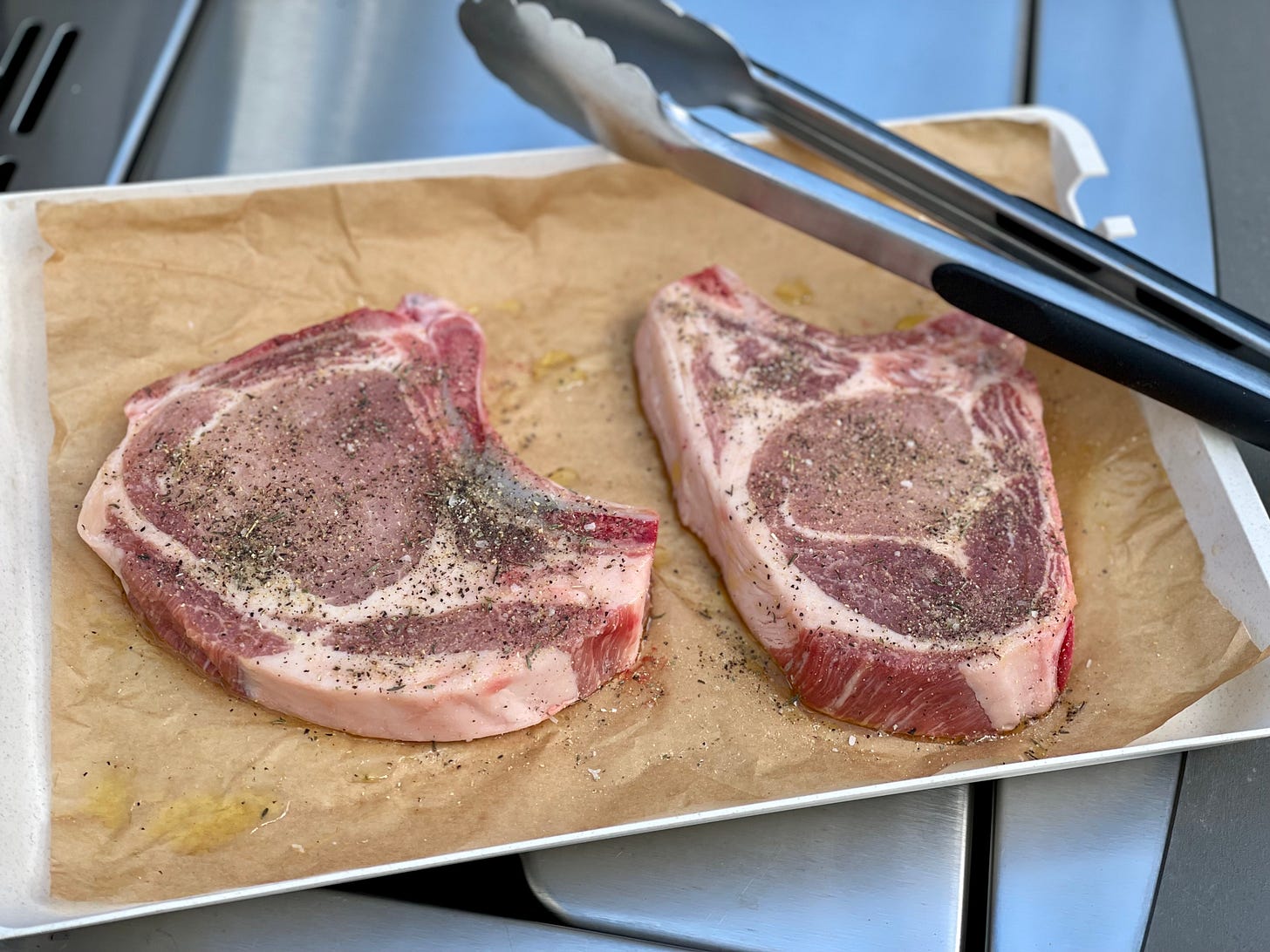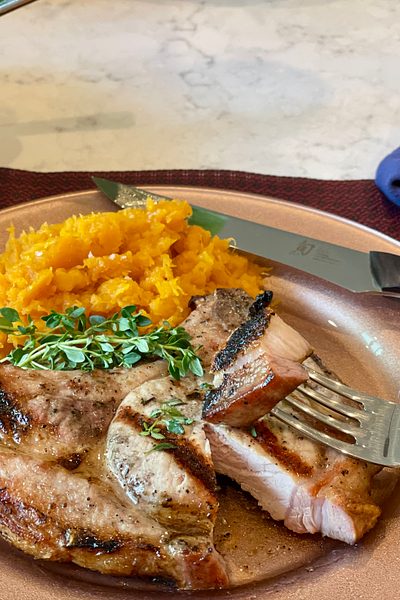Hi W4D Friends! While it’s hardly “sweata weatha” for most of the USA, that hasn’t stopped any of you PSL girlies from diving head first into Decorative Gourd Season. That’s why we’re here to remind you that the best gourds are the ones you can eat! So this week we’re delivering an incredibly gourdgeous dinner idea to your inbox starring Butternut Squash.
BROWN BUTTER BUTTERNUT SQUASH PURÉE & GRILLED PORK CHOPS
EK: “What’s 4 Dinner?” is a tough enough question that re-surfaces every night. It’s not as hard to decide whether to make pasta, chicken, pork, beef or fish, but sometimes it’s hard to decide what vegetables to make alongside the main course.
If you are like me, it’s tough to get out of your veggie rut. I am the person who frequently defaults to spinach or asparagus feeling like a green vegetable is a must—we’ve talked about this before—The Obligatory and Virtuous Green Vegetable, adding green beans and broccoli when I am sick of the former. Luckily, this time of year there is winter squash to choose from. I love squash of all kinds, but especially hard winter squash and there is so much you can do with it.
AU: There are so many to choose from: Butternut, Kabocha, Delicata, Acorn, Honeynut (my fave), and even plain ol’ pumpkin.
EK: If you read about my trip to Michigan, then you know that we made dinner from a Granor Farm CSA bag that included Butternut squash.
The Butternut Squash Purée that we made was a very simple preparation, but it was so good that I can’t get it out of my head. Seasoned simply with brown butter and salt, it had a deep nutty autumn flavor that defied the fact that it was a three-ingredient dish. Plus, it had the texture of loose mashed potatoes, and who doesn’t love the comforting texture of mashed potatoes?
AU: And who wants to peel all those taters?! Not me! I love your signature squash cooking method… I’ll never dread peeling, cutting, and cooking winter squash again.
EK: Once you learn my squash hack, it’s just as easy to make a mash or a purée out of pretty much any winter squash as it is potatoes. I promise that after you bake the squash whole one time, you will be doing it with all manner of squash.
It is easy, and you don’t have to wrestle the squash with a sharp knife! Cooking it whole (in its own skin) leaves the squash flesh silky and more concentrated in flavor. The seeds are easier to remove, as well as the roots no longer hold onto the seeds tightly. (This method is also my secret to the best-ever Coconut Curry Butternut Squash Soup.)
The purée is (almost) a completely hands-off side dish. You can be doing other things while the squash bakes, and you can make the brown butter in advance or while the squash is finishing it’s bake. It can also be made up to a day in advance and leftovers reheat well.
EK: Making the brown butter is an exercise in patience, much like meditation, this is because you want it to brown slowly, you need to stir it frequently and not burn it. Instead of dreading the slow process of making browned butter, I relish it. I make myself a drink and slowly watch and stir as the butter browns.
AU: If I’m making a lot of brown butter at one time, I’ll use a high-sided saucepan, so that the sputtering butter doesn’t end up all over my stovetop.
EK: That’s a great idea! I think the sputtering butter scares people, but don’t let it. It’s like a melt down from your favorite toddler—over before you know it, and sweet and docile after, like it never happened!
There are a couple of tips, like using a light colored or stainless-steel pan so you can see the color clearly and use a low heat. Once the butter is melted, I keep it on level 2 of my gas stove—that is one step above Lo. And, most importantly, just ride it out when it bubbles and foams—see video—it will calm down as soon as all of the “water” is cooked out of the butter.
AU: Exactly. That’s just the water separating from the fat and the milk solids. The milk solids in the butter turn brown and become the super flavorful brown specks that sink to the bottom of the pan.
EK: Yeeeesss! Don’t strain those super flavorful brown bits—those caramelized bits give the butter it’s nutty flavor! This is obviously a personal choice. I LOVE the BITS more than the BUTTER!
AU: Straining out the milk solids (aka “the bits”) makes it Ghee! Which is great for higher-heat cooking, but if you’re looking for that tell-tale nutty brown butter flavor, keep all those browned specks in the mix! (I do enjoy making popcorn with ghee, though).
EK: Now that you are a pro, you can make extra for Anthony’s famous 10-Year Chocolate Chip Cookies. Watch him make them here and read about them here.
THE “BUTCHER’S BEST” GRILLED PORK CHOP
EK: The purée begs to be served alongside pork, but if you don’t eat pork, don’t worry, it is honestly good with everything—try some tossed with mushroom tortellini, ravioli, or your favorite pasta!
But for me, the perfect weeknight main for the BBB (Brown Butter Butternut) purée is a bone-in pork chop, seasoned with a simple dry rub and grilled.
As long as you don’t overcook it, it never disappoints. It’s inexpensive, quick and easy to execute. Plus as long as you cook it outdoors, there isn’t a messy pan to wash!
The dry rub is one that I call “Butcher’s Best” because it includes all the spices that butcher’s commonly use—black pepper, white pepper, onion powder, dehydrated garlic, rubbed sage and dried thyme, plus kosher salt. This is not a salty rub as it has way more spices than salt, so I also sprinkle a little salt over the finished chops as well.
AU: That rub sounds delicious—especially for pork!
EK: I love it! I keep a jar of the spice rub on my counter to use on everything protein I grill, but it’s especially perfect for pork!
I buy 1-inch thick chops and grill them on a medium direct heat for about 5-6 minutes a side. If your grill runs hot or you are afraid of burning the chops, you can sear them over direct heat for a minute or so, turn them and finish grilling over indirect heat. It will add a few minutes to the cooking time but they won’t burn and you shouldn’t have to deal with flare-ups.
EK: A 1-inch chop is relatively thin, so you don’t want to cook it over too high a heat or for too long or it will be tough and dry out. You want it cooked through and the temp should be between 142-145F, letting it rest for 5 minutes. It’s important to note that the USDA recommends 145F, but I took mine off at 142F and they were perfect—both juicy and slightly smoky with nice caramelized edges, as you can see in the photo above.
AU: This meal looks like the PERFECT answer to What’s 4 Dinner?!











I recently bought a honeynut squash to try & have been wondering what to serve with it. Now I know. That pork chop looks so good.
Thanks for letting me know.
I'll repost it.